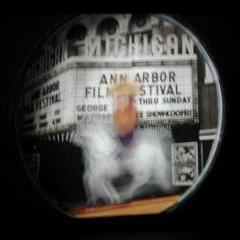
Super 8mm film is a motion picture film format released in 1965 by Eastman Kodak as an improvement over the older "Double" or "Regular" 8 mm home movie format.
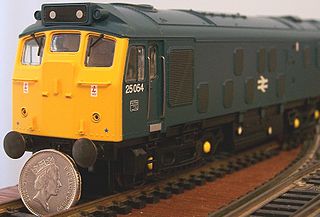
OO gauge or OO scale model railways are the most popular standard-gauge model railway tracks in the United Kingdom. This track gauge is one of several 4 mm-scale standards used, but it is the only one to be served by the major manufacturers. Despite this, the OO track gauge of 16.5 mm is inaccurate for 4 mm scale, and other gauges of the same scale have arisen to better serve the desires of some modellers for greater scale accuracy.

135 is photographic film in a film format used for still photography. It is a cartridge film with a film gauge of 35 mm (1.4 in), typically used for hand-held photography in 35 mm film cameras. Its engineering standard for the film is controlled by ISO 1007.
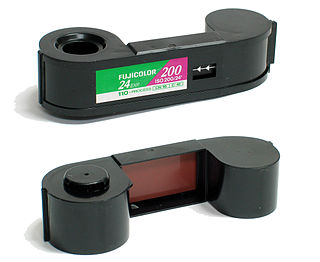
110 is a cartridge-based film format used in still photography. It was introduced by Kodak in 1972. 110 is essentially a miniaturised version of Kodak's earlier 126 film format. Each frame is 13 mm × 17 mm, with one registration hole. There were 24 frames per cartridge that occasionally enabled the user to capture an extra image due to production variations.

Gus Green Van Sant Jr. is an American film director, screenwriter, painter, photographer, musician, and author who has earned acclaim as both an independent and mainstream filmmaker. His films typically deal with themes of marginalized subcultures, in particular homosexuality; as such, Van Sant is considered one of the most prominent auteurs of the New Queer Cinema movement.
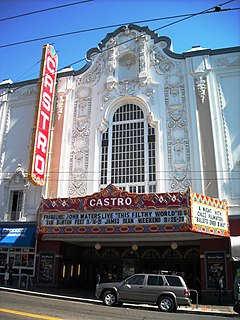
The Castro Theatre is a popular San Francisco movie palace which became San Francisco Historic Landmark #100 in September 1976. Located at 429 Castro Street, in the Castro district, it was built in 1922 with a Spanish Colonial Baroque façade that pays homage—in its great arched central window surmounted by a scrolling pediment framing a niche—to the recently rebuilt basilica of Mission Dolores nearby. Its designer, Timothy L. Pflueger, also designed Oakland's Paramount Theater and other movie theaters in California in that period. The theater has over 1,400 seats. The theater's ceiling is the last known leatherette ceiling in the United States and possibly the world. Another leatherette ceiling was demolished just a few years ago. To make the ceiling look as though it is leather requires a special technique regarded as lost today.
In miniature wargaming, players enact simulated battles using scale models called miniature models, which can be anywhere from 2mm to 54mm in height, to represent warriors, vehicles, artillery, buildings, and terrain. These models are colloquially referred to as miniatures or minis.
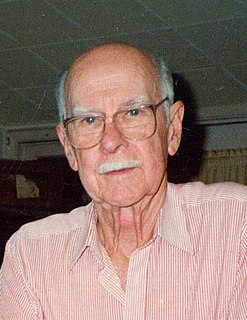
Oliver Martin Johnston, Jr. ("Ollie") was an American motion picture animator. He was one of Disney's Nine Old Men, and the last surviving at the time of his death from natural causes. He was recognized by The Walt Disney Company with its Disney Legend Award in 1989. His work was recognized with the National Medal of Arts in 2005.

Live steam is steam under pressure, obtained by heating water in a boiler. The steam is used to operate stationary or moving equipment.
Documentary television is a genre of television programming that broadcasts documentaries.

The cinema of Thailand dates back to the early days of filmmaking, when King Chulalongkorn's 1897 visit to Bern, Switzerland was recorded by François-Henri Lavancy-Clarke. The film was then brought to Bangkok, where it was exhibited. This sparked more interest in film by the Thai Royal Family and local businessmen, who brought in filmmaking equipment and started to exhibit foreign films. By the 1920s, a local film industry was started and in the 1930s, the Thai film industry had its first "golden age", with a number of studios producing films.
A no-budget film is a film made with very little or no money.
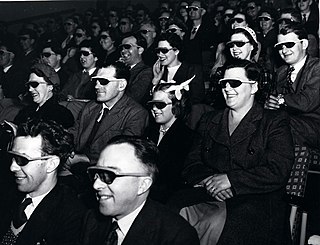
The Telecinema was a small cinema built specially for the Festival of Britain's London South Bank Exhibition in the summer of 1951. It was situated between Waterloo station and the Royal Festival Hall.
Home video is pre-recorded video media that is either sold, rented or streamed for home entertainment. It is a type of home media. The term originates from the VHS/Betamax era, when the predominant medium was videotape, but has carried over into optical disc formats like DVD and Blu-ray and, since the 2000s, into methods of digital distribution such as Netflix, Hulu, and Amazon Video.

Go, Yellow is a 2001 Croatian football comedy-drama film directed by Dražen Žarković. It was Žarković's debut feature film, after having directed several award-winning documentary and short films. He set out to create an unpretentious, easy-to-watch film that would be popular with the cinemagoers, but it was ultimately poorly received at the Croatian box office and was met with mixed reviews from the critics.

Matthew Harrison is an American television and film director, producer and writer. He first came to prominence when his feature film Rhythm Thief was awarded Special Jury Recognition for Directing at the Sundance Film Festival. His first studio feature Kicked in the Head was executive produced by Martin Scorsese and released by Universal Studios. He directed episodes 1X11 and 1X12 of HBO's Sex and the City.
The 54th National Film Awards, presented by Directorate of Film Festivals, the organisation set up by Ministry of Information and Broadcasting, India to felicitate the best of Indian Cinema released in the year 2006.
The aspect ratio of an image describes the proportional relationship between its width and its height. It is commonly expressed as two numbers separated by a colon, as in 16:9. For an x:y aspect ratio, no matter how big or small the image is, if the width is divided into x units of equal length and the height is measured using this same length unit, the height will be measured to be y units.
The National Film Award for Best Non-Feature Film Narration / Voice Over is one of the National Film Awards given by Directorate of Film Festivals, India. It is instituted in 2003 and awarded at 51st National Film Awards.


